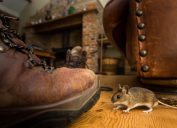If You Keep This on Your Bed, You May Be Attracting Mice, Experts Say
This one common accessory could be making your bedroom a haven for pests.
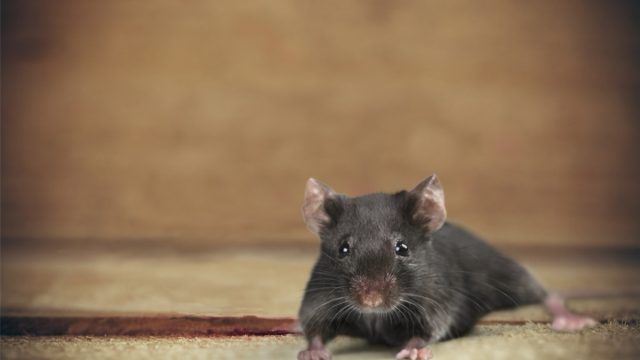
There are few things more enjoyable than curling up in bed after a long day. And while you may be looking forward to snuggling up against those fluffy pillows and burrowing under your soft comforter, it may not be comfort alone you find in your bed. In fact, pest control experts say having this one common item—and not one associated with food—on your bed could be inviting mice into your sleeping space. Read on to find out how you could be making your bed a haven for mice and what to do about it.
RELATED: 6 Foods in Your Kitchen That Are Bringing Mice Into Your Home.
Mice can climb dust ruffles into your bed.
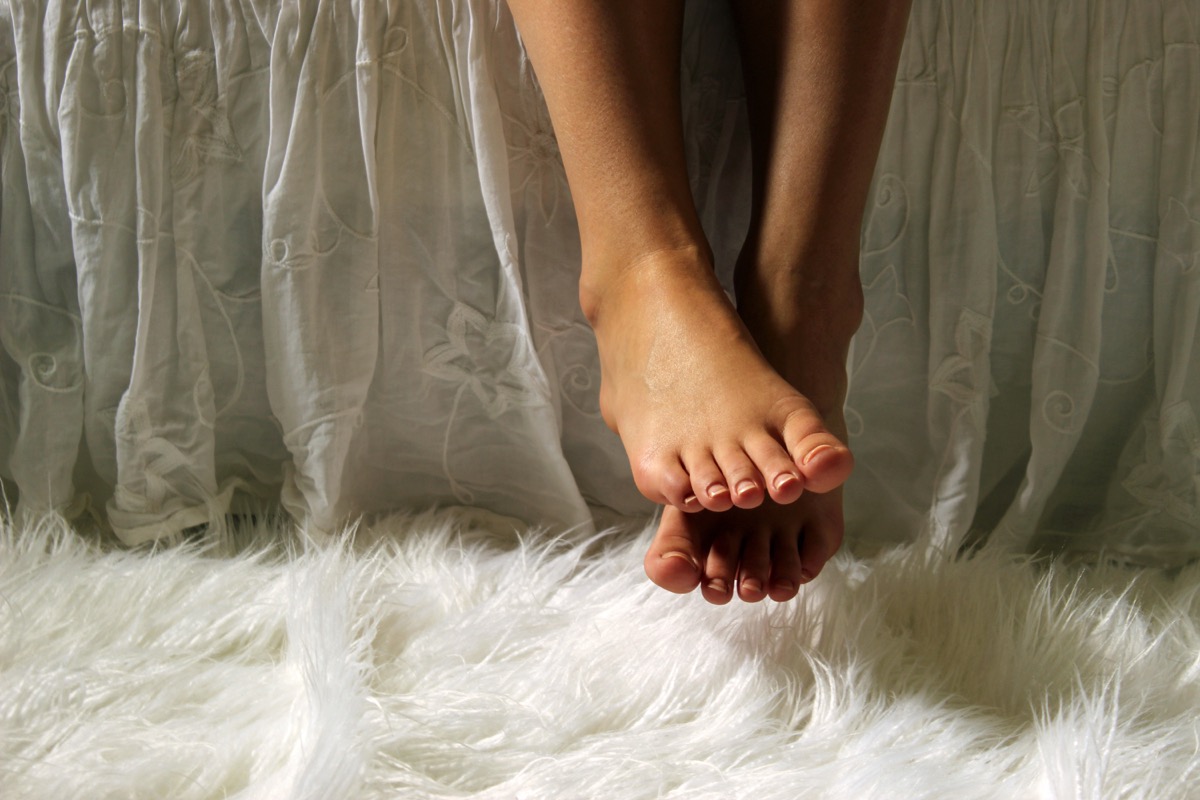
If you want to ensure that your bed doesn't become a resting spot for pests, you may want to remove your dust ruffle, experts say.
"Mice can climb and crawl on any surface. Mice can use dust ruffles and draping blankets and sheets as ladders to get on the bed and onto higher surfaces, such as your bedside table, shelves, or dresser," explains pest control expert Ryan Smith, owner of Ant and Garden Organic Pest Control.
For more helpful home tips delivered straight to your inbox, sign up for our daily newsletter!
Curtain can also pose a risk.
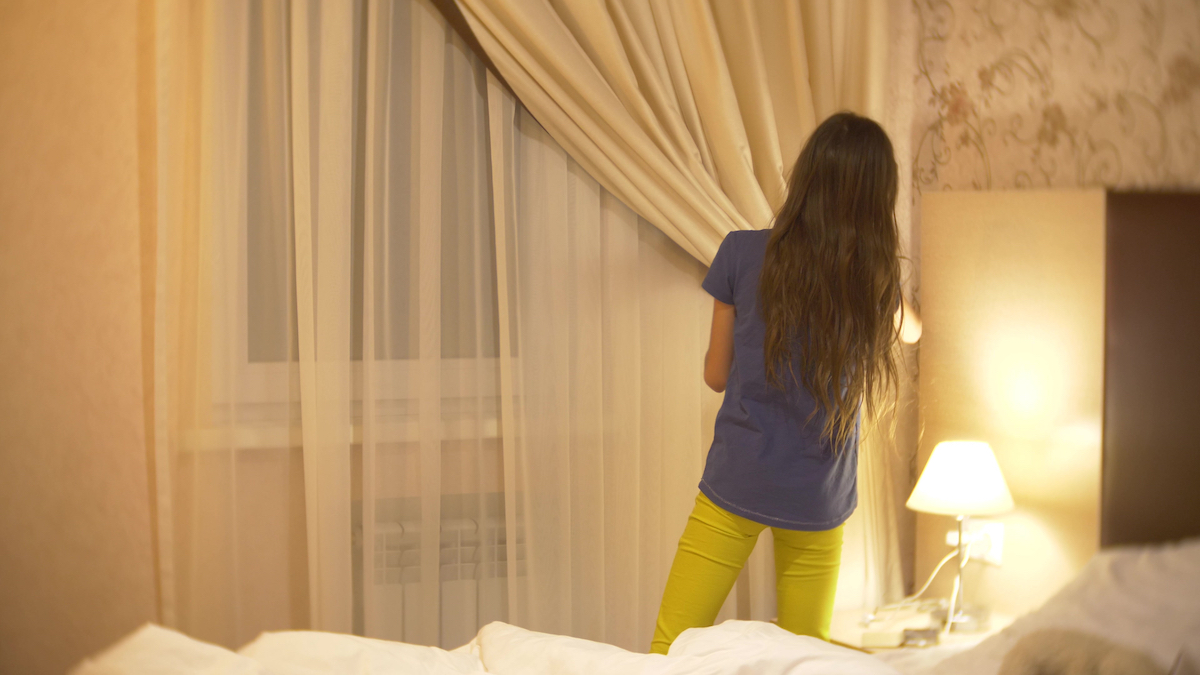
However, it's not just your bedding that may be rolling out the welcome mat for pests. If your bed is located near a window and your curtains touch or come near the ground, it could be providing easy access for mice.
"If you have low hanging fabrics on the bottom of your bed or curtains hanging from your wall, they this can create a dark, hidden area of your home where rodents can create a home for themselves away from your direct line of view," explains Ty Jones, owner of Florida-based pest control company Deans Services.
Making your bed differently may help reduce your risk of pests.
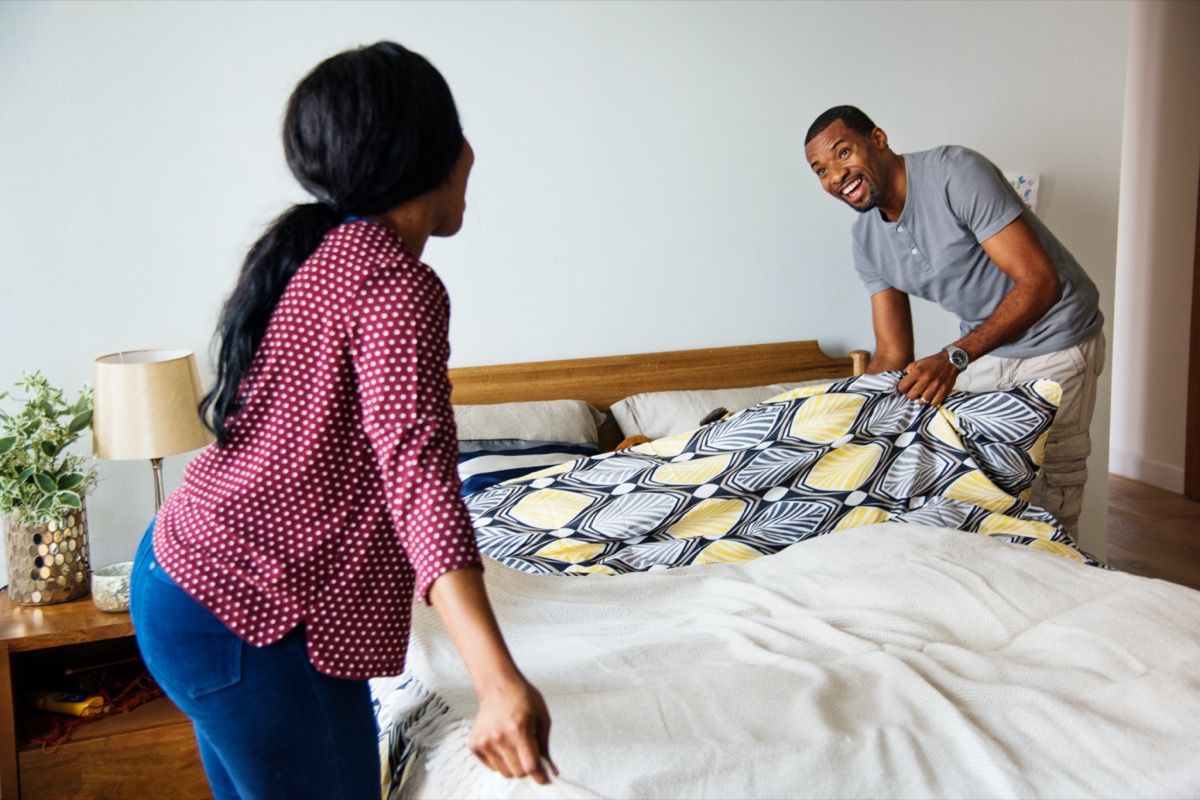
If you want to keep pests from nesting in your bed, removing your dust ruffle—or at least pulling it up slightly so it doesn't sweep the floor may help. Tucking in your comforter may also limit rodent access to your sleeping space.
Similarly, adjusting curtains that touch the floor can help—but you may need go shorter than you think. Smith notes that mice can jump up to a foot, so you may need to keep fabrics relatively high off the ground to keep pests from climbing up.
Natural scents may help deter pest activity, as well.

Once you've already removed floor-sweeping fabrics from your sleeping space, there's yet another way you may be able to reduce the risk of running into a rodent in your bed.
Pest control company Terminix suggests that peppermint oil may be an effective deterrent for mice, and minty scents have been found to deter activity from other rodents. According to a 2014 study published in The Scientific World Journal, household rats ate significantly less food in areas where eucalyptus oil had been sprayed.
RELATED: 6 Things in Your Garage That Are Bringing Mice to Your Home.
